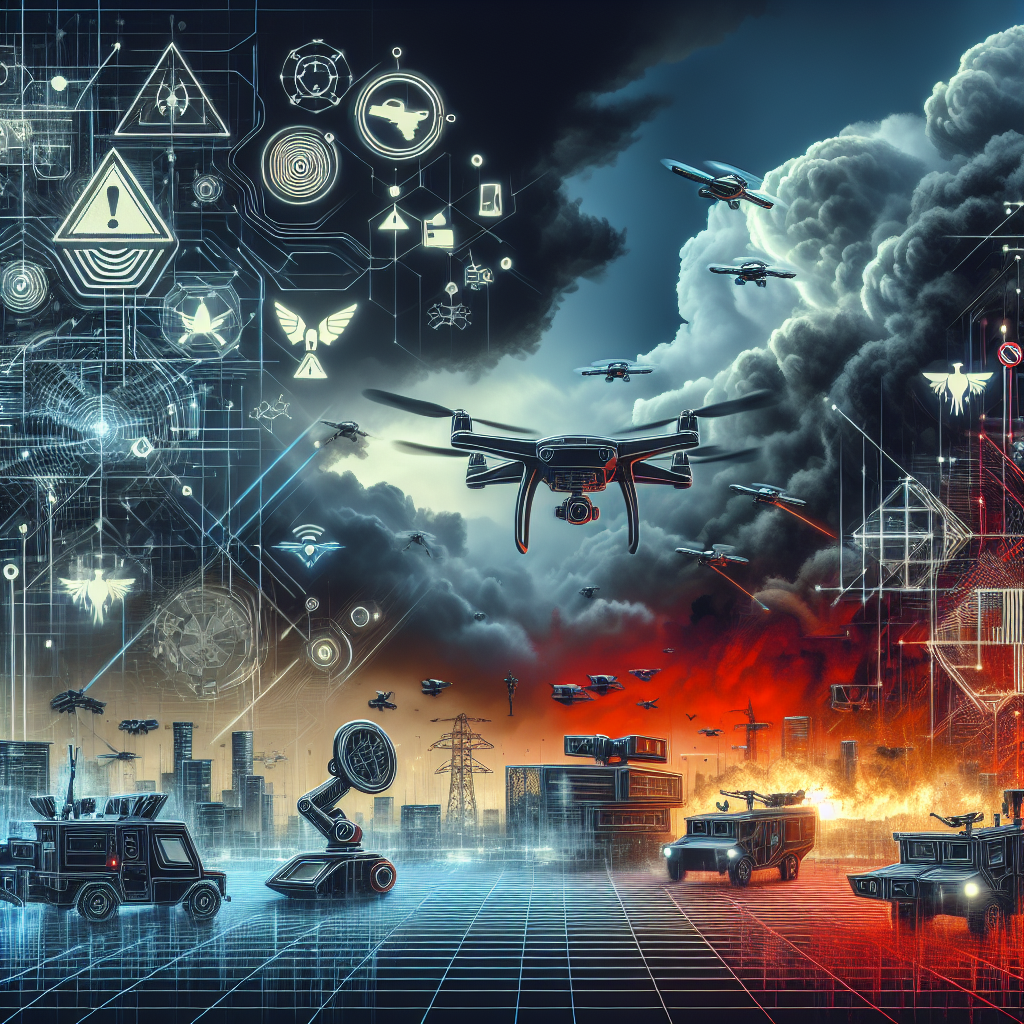Introduction
With the rapid advancements in artificial intelligence (AI) technology, the future of warfare is being reshaped in ways that were once unimaginable. AI has the potential to revolutionize military operations, making them more efficient, precise, and lethal. However, along with the benefits of AI in warfare, there are also significant risks and consequences that must be considered.
Risks of AI in Warfare
One of the biggest risks of AI in warfare is the potential for autonomous weapons systems to make life-and-death decisions without human intervention. These systems could be programmed to identify and engage targets on their own, without human oversight. This raises serious ethical concerns about the use of lethal force in conflict situations, as well as the potential for unintended consequences.
Another risk is the possibility of AI systems being hacked or manipulated by hostile actors. If a country’s military relies heavily on AI for its operations, it could be vulnerable to cyber attacks that could disrupt or disable its capabilities. This could have devastating consequences on the battlefield and lead to a loss of human lives.
Furthermore, there is a risk that AI could be used to develop new types of weapons that are more destructive and indiscriminate than traditional weapons. For example, AI-powered drones could be programmed to target entire populations based on algorithmic calculations, leading to widespread casualties and devastation.
Consequences of AI in Warfare
The consequences of using AI in warfare are far-reaching and complex. On one hand, AI has the potential to make military operations more efficient and effective, reducing the risk to human soldiers and civilians. AI can be used for tasks such as intelligence gathering, target identification, and logistics, allowing for faster decision-making and response times.
However, the use of AI in warfare also raises concerns about the dehumanization of conflict. As machines take on more roles in military operations, there is a risk that the human cost of war will be reduced to numbers and statistics, rather than the human suffering and loss that it entails. This could lead to a desensitization to the consequences of war, making it easier to engage in acts of violence and aggression.
Another consequence of AI in warfare is the potential for an arms race among countries to develop and deploy advanced AI technologies. This could lead to an escalation of conflict and an increase in the likelihood of war, as countries seek to gain a strategic advantage over their rivals. The proliferation of AI weapons could also lead to an erosion of international norms and regulations governing the use of force, making it harder to control the spread of deadly technologies.
FAQs
Q: Can AI be used for defensive purposes in warfare?
A: Yes, AI can be used for defensive purposes in warfare, such as detecting and neutralizing incoming threats, protecting critical infrastructure, and defending against cyber attacks. AI can enhance the capabilities of military forces to respond to threats more effectively and protect against potential attacks.
Q: What are the challenges of integrating AI into military operations?
A: One of the main challenges of integrating AI into military operations is ensuring that the technology is reliable, accurate, and secure. AI systems must be able to operate in complex and dynamic environments, adapt to changing conditions, and make decisions quickly and accurately. There are also ethical and legal considerations that must be taken into account when using AI in warfare, such as ensuring that human oversight is maintained and that the technology is used in accordance with international laws and norms.
Q: How can AI be regulated in warfare?
A: Regulating AI in warfare is a complex and challenging task, as the technology is constantly evolving and changing. One approach is to establish international agreements and treaties that set out guidelines for the development and use of AI in military operations. These agreements could include provisions for transparency, accountability, and oversight of AI systems, as well as restrictions on the use of autonomous weapons systems. Governments and international organizations can also work together to develop ethical guidelines and standards for the use of AI in warfare, ensuring that the technology is used in a responsible and humane manner.
Conclusion
As AI technology continues to advance, the future of warfare is likely to be shaped by its capabilities and potential. While AI has the potential to revolutionize military operations and make them more efficient and precise, there are also significant risks and consequences that must be considered. It is essential for governments, military leaders, and policymakers to carefully assess the implications of using AI in warfare and to develop appropriate regulations and safeguards to ensure that the technology is used responsibly and ethically. By taking a proactive approach to managing the risks and consequences of AI in warfare, we can help to minimize the potential harm and ensure that the technology is used in a way that promotes peace and security.

